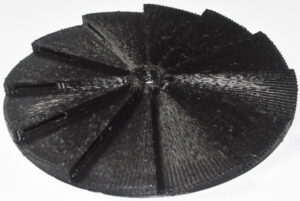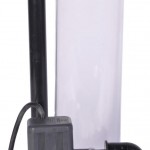The Marine Biosystems F5 media reactors are combining 3D printing and ingenuity to deliver a unique spin on the biopellet reactor.
Like most innovations in biopellet reactors, the goal is to improve the churning of the media to deliver even flow, minimize clumping and most importantly, improve the efficiency of the product. The Marine Biosystems F5 uses a patent-pending finned lifting plate that lifts the entire biopellet mass on a cushion of water.
The team is not just utilizing simple 3D printing, rather leveraging advances in additive manufacturing, the industrial version of 3D printing, the team is able to construct a product a truly innovative design.
“The unique feature of these reactors is the dispersion plate, which cannot be easily injection molded or milled from acrylic,” said Tom Blaha founder of Marine Biosystems in an email to Reef Builders. “When water is passed through the plate — the shape of the plate combined with the radially spaced vertical outlet holes — forces the water under the pellets in a broad shearing sheet. The weight of stationary pellets above forces that sheet to build pressure until it lifts the entire pellet column upward, releasing it from the bottom the reactor. Once its lifted then it begins moving and fluidizes.”
From what we were told and what we see in the sample YouTube videos, this is similar to how an avalanche forms on a mountain, where a thin shear layer breaks loose and the rest of the material from above flows easily. The team notes, just like with an avalanche, very little energy is needed to get it started and to maintain the motion. How little energy? The standard F5 can fluidize 400 ml of pellets using a Rio 50+ pump (69 GPH).
Although 3D printing has some limits and aesthetic issues, the team designed around these as much as possible to build the product. This also allows for the ability to produce one-offs while being able to scale for mass production demands.
They performance is pretty promising and we look forward to seeing these at MACNA this fall.






